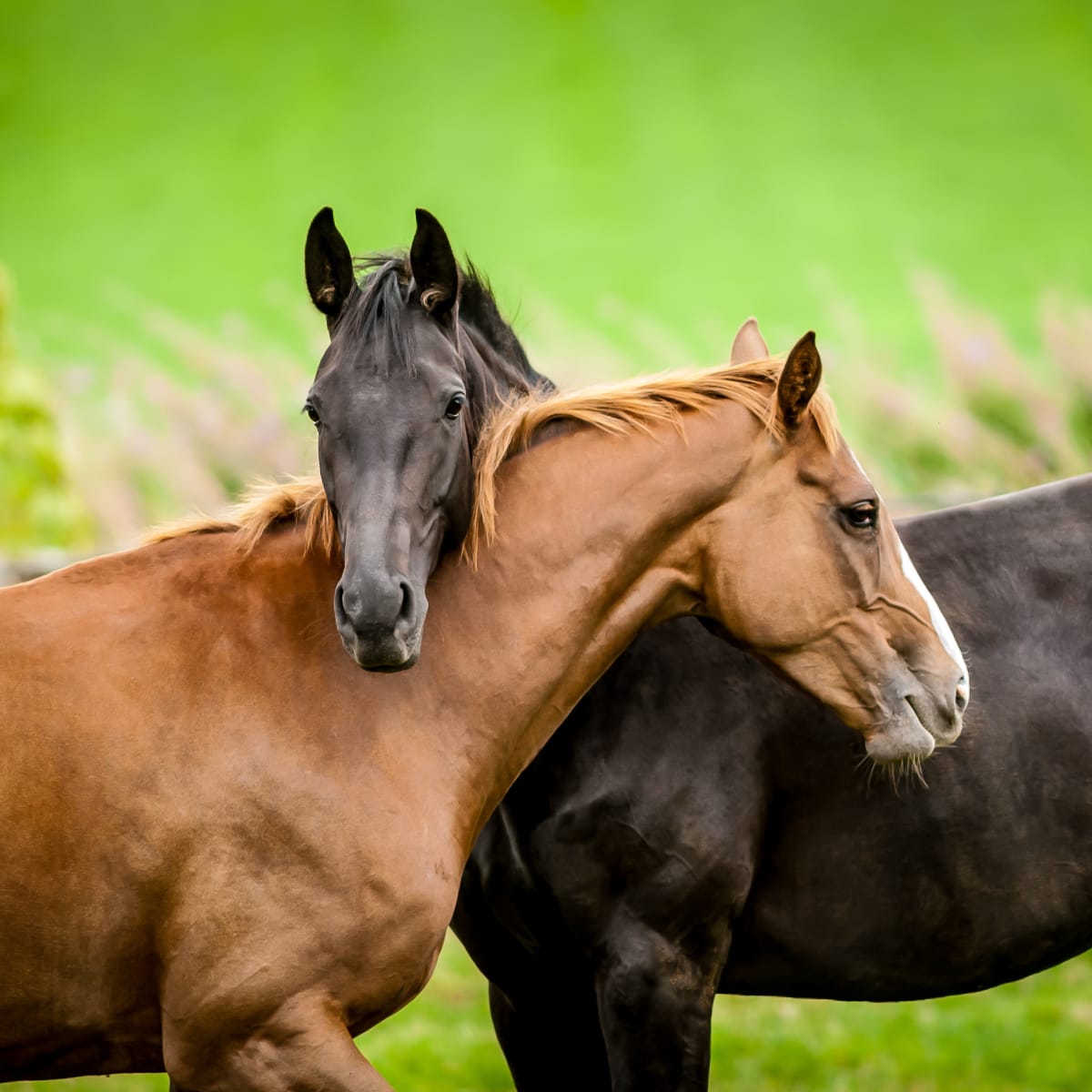
22 Feb 2021 Natural Horse Care Techniques
Getting Outside the “Box”
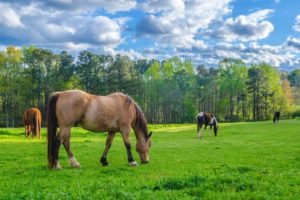 As a child, when I thought of having a horse farm, I imagined large fields where the horse could run and graze. No restraints, just freedom and nature… A natural horse care lifestyle.
As a child, when I thought of having a horse farm, I imagined large fields where the horse could run and graze. No restraints, just freedom and nature… A natural horse care lifestyle.
It soon became very clear that most horses never get to live like I had imagined as a child.
Now, 35 years of dreaming later, I have built a 4O-acre horse farm where the horse comes first and everything is designed around providing natural care to my horses.
Through helping client horses and my own, I’ve seen how so many issues can be fixed by changing to a wholesome, nutrition-first approach. My philosophy is keeping horses as close to how they were created to live.
Main Benefits of Natural Horse Care
The more naturally you can keep your horse, the better their mental and physical health will be. You’ll notice fewer vices such as cribbing or weaving, mouthiness, impatience in the cross ties. Challenging behavior under saddle will largely if not entirely disappear.
And your horse will have major health benefits, such as increased circulation, healthier hooves and joints, and a lower risk of ulcers and colic.
When I talk to people about the problems they’re having with their horses, they almost always mention one or more of the issues above. I’ve seen how all these behavioral issues can all be improved by changing to a more natural horse care program.
The important elements of a natural lifestyle for your horse include movement, grazing, playtime, and adopting a nutrition-first approach.
Natural Movement for Horses
Horses are made to move. A little, but all of the time. In the wild, horses travel around 2O miles a day, just foraging for food and water. This kind of exercise is impossible to be obtained through riding an hour a day. The most important component in a healthy lifestyle for your horse is turnout. The more, the better.
Studies have shown that horses who get free turnout are much less likely to have ulcers or colic. Continuous movement also promotes circulation, which keeps your horse healthier and can even speed healing.
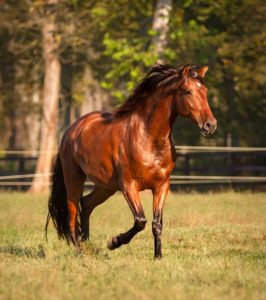 Problem-Solving for Limited Turnout
Problem-Solving for Limited Turnout
1. Groom your horse slowly and take them on a long hack before and after the ride, so it all adds up to time outside of the stall.
2. You can choose to lunge your horse and do some groundwork in an arena or round pen or even a pasture to get them moving. Lunging can be a great way to work on their abdominal and back muscles when you use ground poles or cavalettis but it can be harder on the joints, so make sure to take some time to build up their strength and change direction frequently.
3. Hand walking can be a very beneficial and low impact way of movement for an older horse or a horse that needs to be brought back into work. It is also an opportunity to introduce some hills into the regimen of movement and it keeps the person doing the hand walking fit!
4. Ponying a horse off another horse is another way to get multiple horses exercised at once, without adding the stress of added weight or constraints of saddles.
Natural Horse Grazing
Horses are designed to spend 1O-14 hours per day grazing. At most, they spend only an hour or two at a time not eating, and this is mostly when they’re sleeping or on the move.
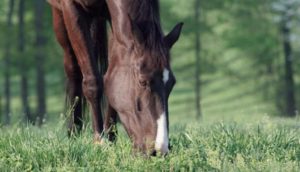 To provide a more natural feeding program, make sure your horse has a fiber-rich diet and has plenty of chew time. It’s better to give horses more flakes of less-rich hay, than only a flake or two of very rich hay which disappears quickly. If the horse is confined to a stall, a hay net with small or medium sized holes is ideal to keep them busy longer and to ward off any boredom which its associated vices like cribbing or weaving.
To provide a more natural feeding program, make sure your horse has a fiber-rich diet and has plenty of chew time. It’s better to give horses more flakes of less-rich hay, than only a flake or two of very rich hay which disappears quickly. If the horse is confined to a stall, a hay net with small or medium sized holes is ideal to keep them busy longer and to ward off any boredom which its associated vices like cribbing or weaving.
As a prey animal, horses were not designed to have large meals at set times. Continuous access to hay or grass will greatly benefit your horse’s digestive system by producing enough saliva to coat their stomach in anti-acid, and provide good bacteria for the hind gut.
Barefoot Options
If you want your horse to live a more natural lifestyle, consider keeping them barefoot or using barefoot options such as boots instead of metal shoes. This isn’t just because metal isn’t “natural.” The horse’s circulation really benefits from this. (Look for an in-depth blog about why this is coming soon!)
Because of gravity and how long horse’s legs are, horse’s hearts have a lot of work to do. The frog in the hoof acts like a mini pump to reduce the strain on the heart. With every step, blood is pushed back up the leg. Metal shoes prevent the hoof and frog from expanding and contracting, and decrease circulation.
If a horse can go barefoot with proper nutrition and maintenance, it is always healthier for them to not have metal shoes.
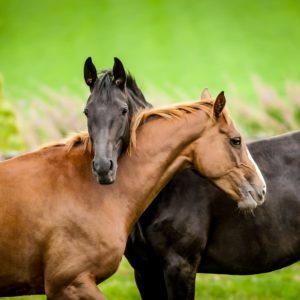 Friends and Playtime
Friends and Playtime
Horses are highly social animals and need a lot of stimulation to stay happy and fulfilled.
If you want your horse to thrive, make sure to keep it in a herd, or at least have a buddy or close neighbor they can play and interact with.
Horses have better mental health when they can socialize, and you’ll also notice high-strung behaviors under saddle and on the ground improve because they are getting enough entertainment and stimulation throughout the day.
Especially young horses should be allowed to run and play as it teaches them about boundaries and hierarchy. The movement during play also promotes bone density and growth which are crucial for a strong foundation.
Adopt a Nutrition-First Approach
 There are times when horses absolutely need medicine. I myself work closely with several vets and am happy to take their recommendations and medicate my horses. Yet, many of the smaller ongoing issues that we experience with horses can be managed or even prevented with wholesome nutrition.
There are times when horses absolutely need medicine. I myself work closely with several vets and am happy to take their recommendations and medicate my horses. Yet, many of the smaller ongoing issues that we experience with horses can be managed or even prevented with wholesome nutrition.
Ulcers can be prevented by providing a high fiber diet. Joint pain and inflammation can be decreased or prevented with herbs such as turmeric. And problems with too little or too much energy are often metabolic.
If you want to create a healthy lifestyle for your horse, evaluate your feeding program first when you encounter issues. Have a vet or a nutrition expert help you with this, because you want to do this right.
(If you want my help, I give everyone a free consultation where we discuss your horse’s lifestyle, goals, and ways you can provide more natural horse care for your partner!)
And as always, make sure that you’re feeding several small meals throughout the day rather than one or two big meals.
Natural Horse Care Boarding
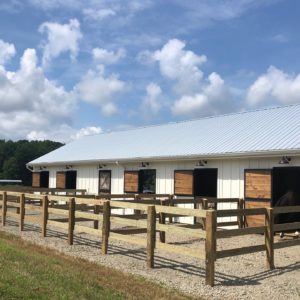
The stalls at my stable all have run-ins attached to the back of the stalls to give horses more freedom
Many of us don’t have miles of pasture to give our horses, or may have little control while at a boarding barn. But there are still some things you can look for when choosing a place to keep your horse for a happy, natural life.
Run-In Stalls
Modern, high quality barns are now being built with run-in options attached to stalls. This is affordable too. It’s as simple as adding a little more fencing to the back of your horse’s stall. It gives them space to walk freely between their stall and the run-in. I built these in my own barn and my horses love them, rarely going into their stalls. They love the fresh air and freedom that run-ins give them.
Airflow
Open air style barns are also a big factor in your horse’s mental health and well being. Not only can dusty barns with bad ventilation create breathing issues like heaves, but low ceilings and poor lighting can also make horses depressed.
Look for barns that have windows allowing fresh air in every stall and doors that offer maximum air flow.
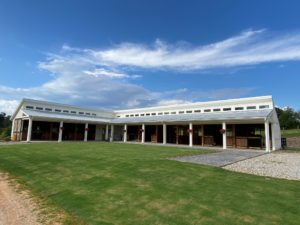
I built my barn with air flow, lighting, open space in mind
Sky lights, fans, windows, or open front European style barns are great sources of fresh air.
Barns in cold climates need to pay even more attention to their air quality because opening windows or building open-front barns may not be an option for them. But by being thoughtful and resourceful, anyone can help their horse live a happier life.
Lighting
Lighting in also something you should ask about when researching boarding barns. Do the lights get turned on at 4 am when the barn staff arrives? Are the lights still on at 1O pm when boarders are sneaking in a ride after work? Do lights get flicked on and off throughout the night for wellness checks? All this can disturb horses and mess up their internal clock. Horses love peaceful, quiet lives. A horse kept in pasture can choose how close they want to be to the center of activity. And they stay in tune with the daylight and seasons, which helps regulate hormones. Especially important for mares!
No matter how fancy a stall you can build, there are some major advantages to pasture-focused living in quality of life that shouldn’t be underestimated.
Summary
Overall, the best way to create a natural horse care system for your horse is to allow turnout for as many hours as possible, give access to grass/hay continuously, let them play with friends, and use nutrition as the foundation for your problem solving.
There are also many natural horse products on the market that you can look into. Beware of misleading labels though. Not everything titled “natural” or “organic” actually is. My recommendations for high quality, genuine products are here.